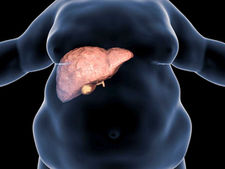
Hydrocephalus
What is Hydrocephalus?
Cerebrospinal fluid is made and reabsorbed continuously throughout the day. This fluid surrounds the brain and spinal cord and has a continuous circulation.
It has three basic functions: To reduce the harmful effects of blows to the brain and spinal cord, to help nourish the brain and transport waste, and to regulate pressure changes in the brain by circulating between the brain and spinal cord.
Hydrocephalus is a combination of the words hydro=water and cephali=head. It is generally known as excessive water accumulation in the brain. The water referred to here is "cerebrospinal fluid". The increase in the amount of this fluid in some chambers of the brain causes the pressure inside the head to increase and damage the brain. Hydrocephalus can be seen at any age, but it often occurs in children and the elderly (over 60 years of age).
Hydrocephalus is seen in approximately one in 500 children. In most of these patients, the diagnosis is made at birth, prenatally, or in early infancy. Although rare, it may be due to genetic (inherited) disorders or developmental disorders. Common causes: intracerebral hemorrhage, head trauma, brain tumors, bleeding due to premature birth and meningitis.
What are the Causes of Hydrocephalus?
The causes that lead to hydrocephalus vary according to age group. Newborn (0-2 months): Congenital: These patients constitute the largest group. It may be just hydrocephalus, or it may be accompanied by other congenital anomalies that develop in the spine (meningomyelocele).
Intracerebral hemorrhage: Brain chambers usually enlarge after spontaneous bleeding.
Children and adults: Brain infections, brain hemorrhages, brain tumors and head trauma.
Elderly: Normal pressure hydrocephalus; It is the expansion of the brain chambers after the absorption of cerebrospinal fluid decreases.
What are the symptoms of hydrocephalus?
Symptoms of hydrocephalus vary from person to person. Common findings are listed below according to age groups.
In newborns (0-2 months); Head growth greater than normal, thinning of the scalp, prominent veins on the head, vomiting, restlessness, rolling eyes, seizures or inability to communicate.
In children (2 months and above); Abnormal growth of the head, headache, nausea, vomiting, fever, double vision, restlessness, regression in walking or speaking, communication disorder, loss of sensory-motor functions, seizures. Older children may have difficulty staying awake or waking up.
In middle-aged adults; Headache, difficulty in waking up or staying awake, balance disorder, urinary incontinence, personality disorder, dementia, visual impairment in the elderly; Disorder in communication, unsteadiness in walking, difficulty in remembering, headache, urinary incontinence.
What are the Treatment Methods of Hydrocephalus?
It is not possible to treat hydrocephalus with medications. Hydrocephalus can only be corrected by surgical interventions performed by neurosurgeons. The surgical intervention methods chosen will vary depending on the underlying cause of hydrocephalus. If there is an obstruction that causes the circulation of the cerebrospinal fluid to deteriorate, surgical treatment can be performed for the obstruction (tumor, cyst, etc.). If the blockage cannot be removed, the intracranial circulation pathways of the cerebrospinal fluid can be changed by surgical interventions. Since it is not possible to restore the circulation of cerebrospinal fluid in the majority of patients, the fluid must be transferred from the brain to another body cavity. A thin, long, elastic, silicone tube called "shunt" is used for this transfer. There is a part of the system called "pump" under the scalp to operate in one direction and at a controlled speed. Excess cerebrospinal fluid is transported to another part of the body through this thin tube. This prevents the pressure inside the brain from increasing. However, since water is constantly produced in the brain, this system must work continuously. Since the shunt is under the skin, it can only be noticed in babies when viewed from the outside. In children and adults, the tube under the skin can be felt when examined manually. The most common method for babies diagnosed while in the womb is to have surgery as early as possible. The shunt is placed surgically under general anesthesia. A small hole is made in the skull and the end of the shunt is placed in the chamber in the brain where the cerebrospinal fluid is located. Then, a tunnel passing under the skin of the head, neck and abdomen is opened and the other end of the shunt is directed into the heart or abdominal cavity, where this fluid can be easily absorbed. Short-term antibiotics may be used to prevent infection after surgery. After surgery, the patient is observed in the hospital for a while. Generally, the patient's complaints improve after a while. However, if there is permanent damage to the brain tissue, some functions of the patient may not recover. The most important reason why functions such as vision and intelligence do not improve is the delay in treatment. The length of the patient's hospital stay varies depending on the patient's recovery status. These patients need to be monitored for a long time to see whether the shunt is working or not. A significant portion of patients treated for hydrocephalus can lead normal lives. The shunt may not work and may need to be replaced in cases of infection.
FOR INFORMATION AND APPOINTMENT, YOU CAN LEAVE YOUR NUMBER OR ASK OUR EXPERTS
YOU CAN LEAVE YOUR NUMBER FOR INFORMATION AND APPOINTMENT AND ASK QUESTIONS TO OUR EXPERTS



-04.png)
-06.png)
-05.png)
-08.png)
-07.png)























